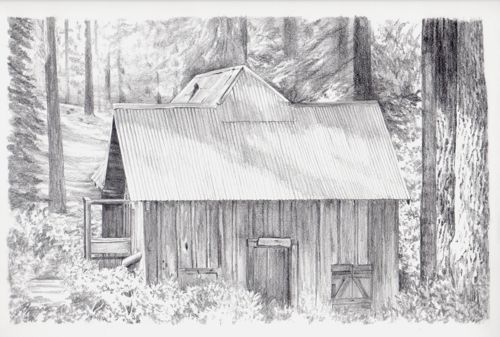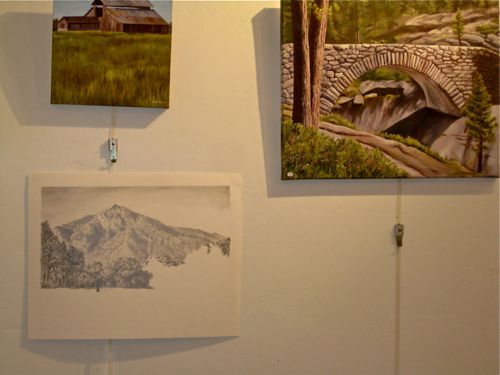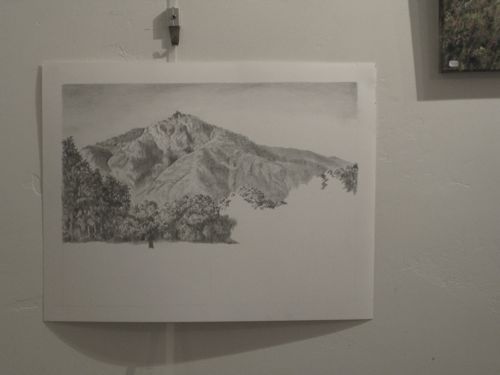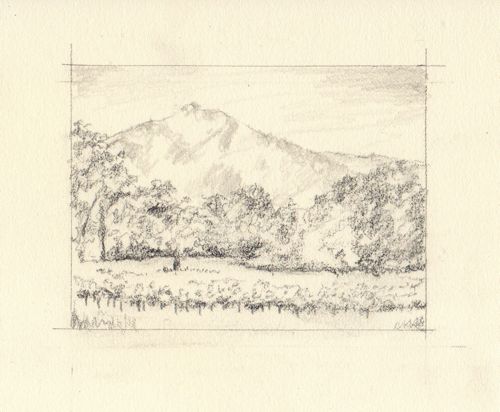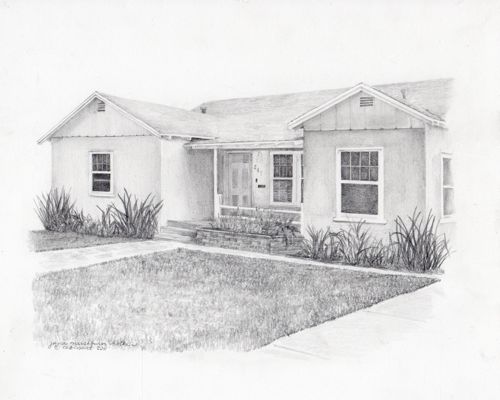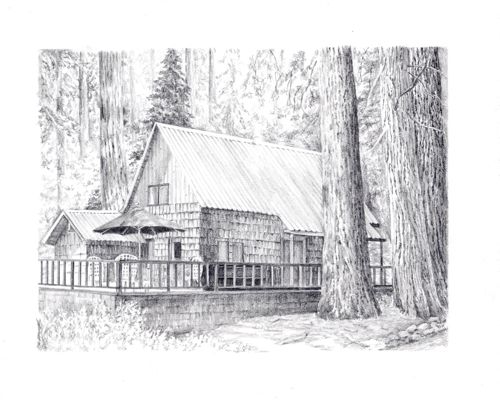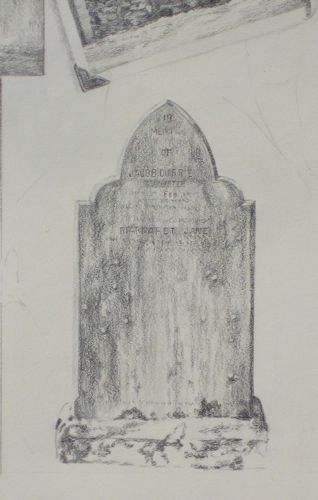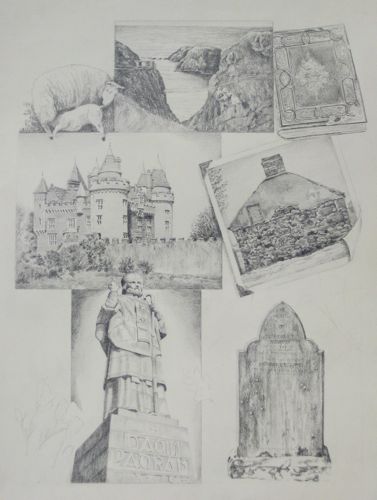2013 brings a new focus to my professional life as a California artist, a “regionalist from Quaintsville”.

I’ve told you about the book I am drawing, writing and publishing – The Cabins of Wilsonia.
You’ve seen drawings as they are completed and read my groanings as I wonder how I will ever finish the project.
Now, I have a plan.
I will spend 2013 focusing solely on the book. No painting, no shows, no painting for future shows.
(Okay, that’s not entirely true. I will paint for the 2 places that sell my work and I will paint commissions.)
I will also accept pencil commissions and teach drawing lessons. (This artist has no intention of starving!)
What does this mean for you, oh Gentle and Faithful Blog Reader?
It means that I will post to this blog 2-3 times a week instead of 5 days.
And, I will post to my new blog 2-3 times a week!
Yeppers, you can follow the progress on my book at dubya-dubya-dubya-dot-the-cabins-of-wilsonia-dot-com.
I’ve separated out this project from my regular blog for several business reasons, most of which you might find boring. And I NEVER want my blog to be b o r i n g.
So, here we go – a complete year of drawing! Can’t wait. Have I ever mentioned that I LOVE to draw? 😎

